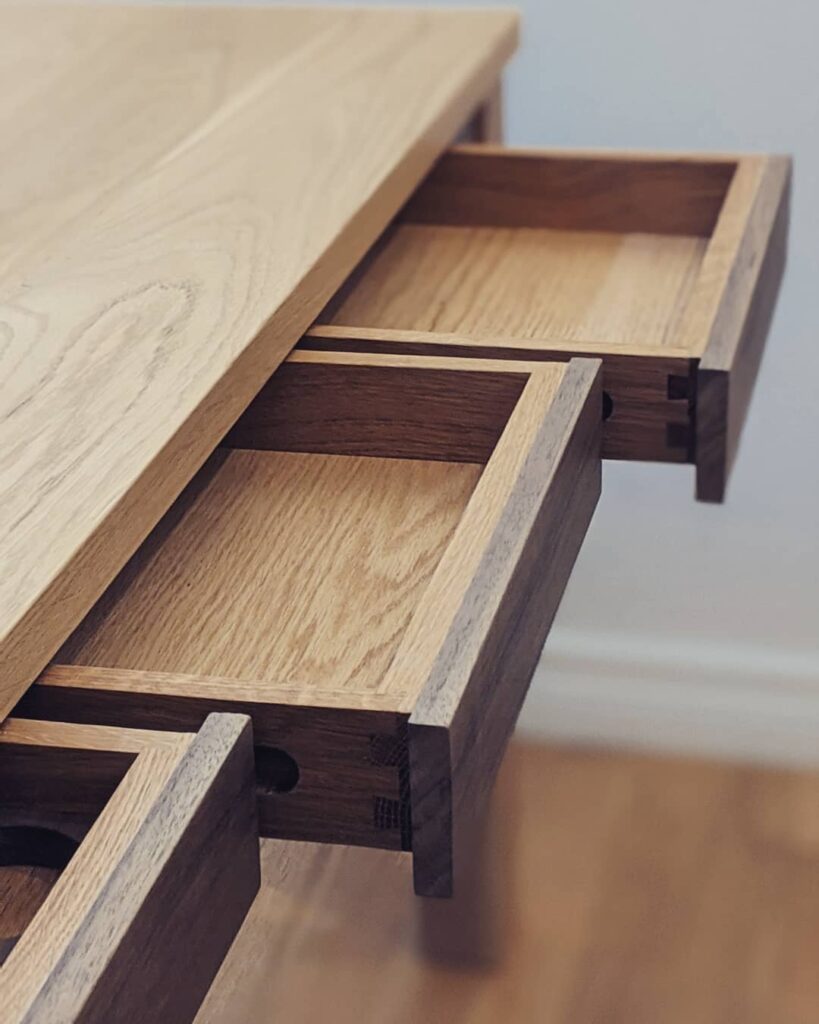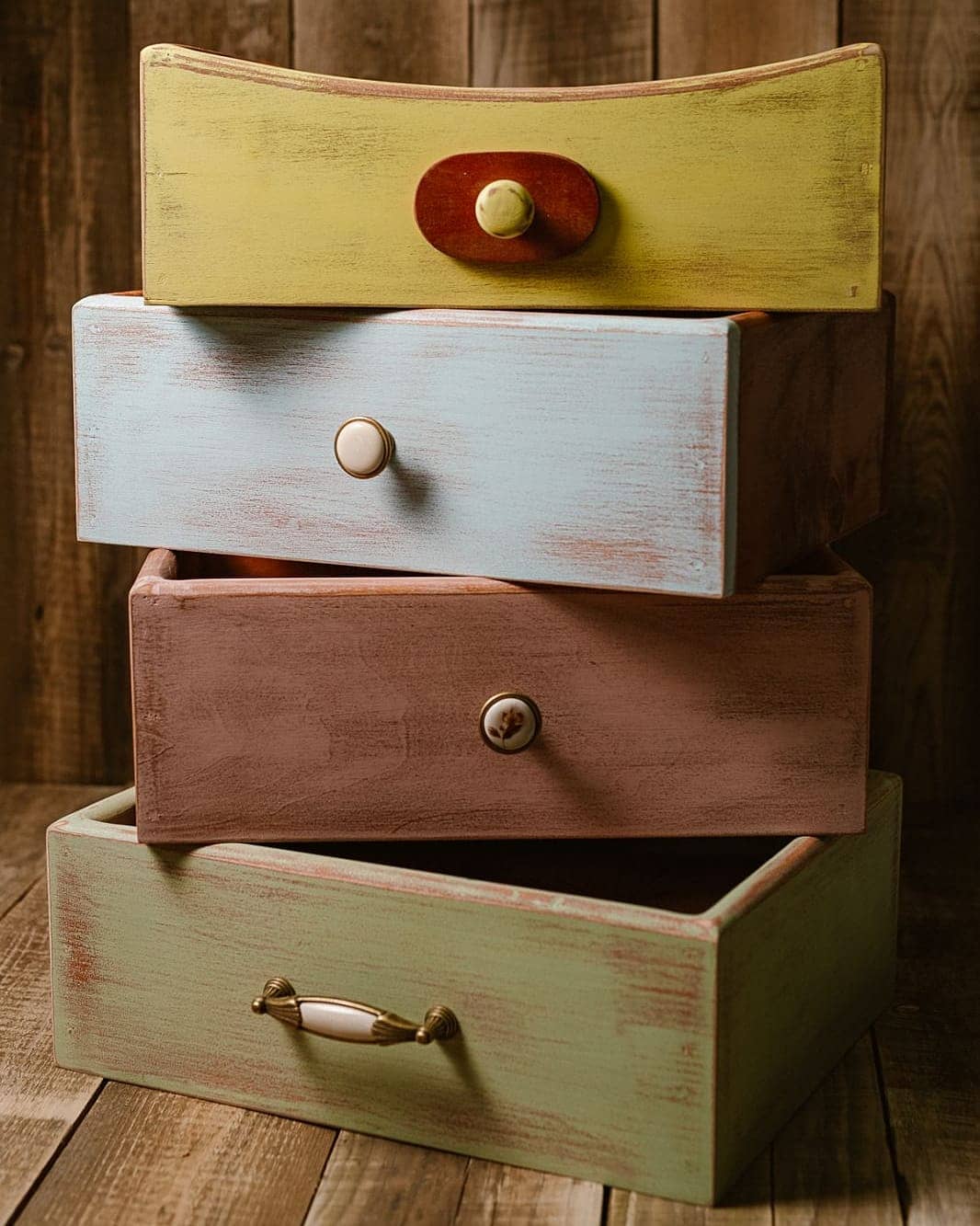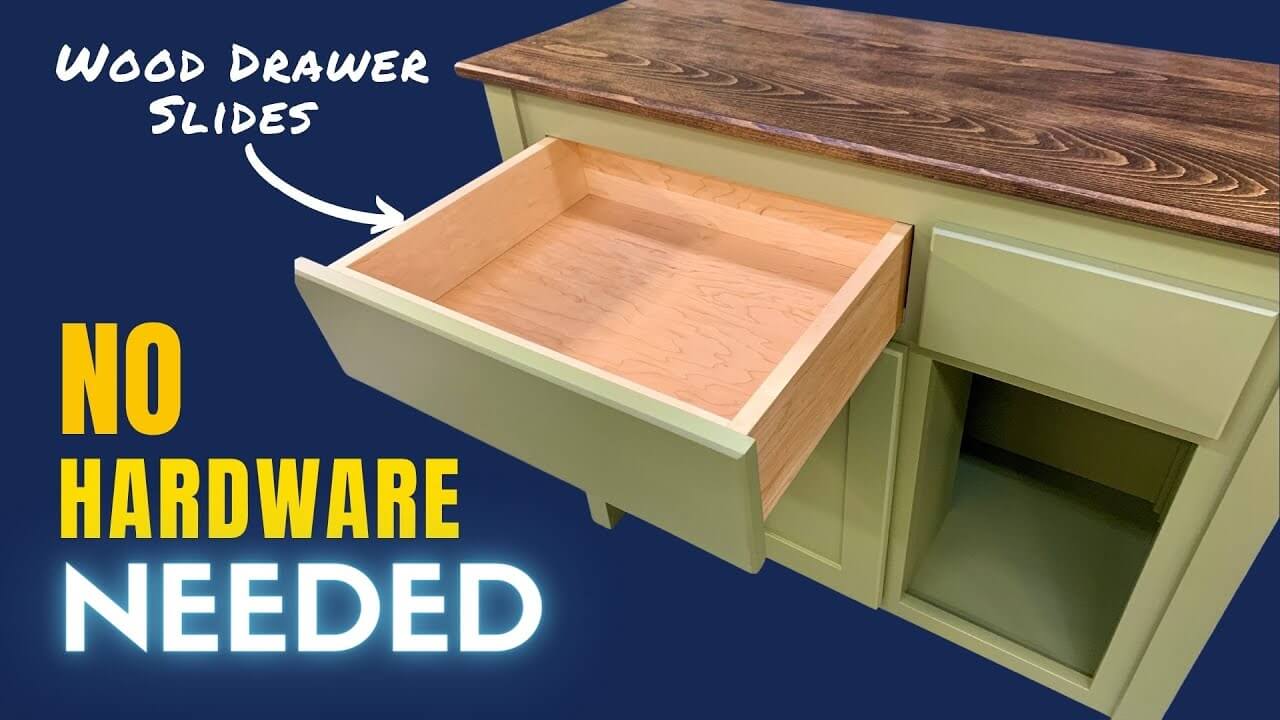How to Make Wood Drawers Slide Easier
Wood drawers can get stuck due to various reasons, such as the natural contraction/expansion of wood, humidity, excess friction, and so on. Using everyday objects like candles and soap for minor warps and grit paper and self-adhesive tape for more major cases, can help make wood drawers slide easier.
If you have an old chest of drawers in the house, stuck drawers are very likely a problem that you’re dealing with often. However, the good news is that this common issue, while annoying, can be fixed pretty quickly and cheaply.
Here’s everything you need to know about how to make your wood drawers slide easier!
Why Do Wooden Drawers Get Stuck?
Wooden drawers can get stuck for a range of reasons:
- Wood, unlike metal, has a structural, physical response to heat and cold. Therefore, you’ll find your wooden furniture and drawers contracting during the cold winter months and expanding in summer’s heat. This can cause them to change shape or warp over time, leading to stuck drawers.
- Wood also has a physical response to humidity, which can lead to stuck drawers. Since wood is porous and absorbs moisture, it can absorb humidity from the air and increase in size. This swelling can cause the drawer to get stuck.
- Wooden drawers tend to get stuck when there’s an excess of friction in the drawer slides. The more you use them without maintaining them, the more resistance you can expect.
- When there’s too much stuff in your drawer, opening and closing can be obstructed. Ensure there is at least a couple of inches between the clothes and the top of the drawer compartment.
- Some objects from the drawer, caught or jammed, can also cause opening and closing issues.
- Accumulated dust, dirt, or old, congealed lubricant can obstruct the smooth opening and closing of the drawer.

How to Make Wooden Drawers Slide Easy
Having stuck drawers can be extremely frustrating, especially when you need to get to grab a fresh pair of socks from your wooden bed frame drawers.
Fortunately, stuck wooden drawers are not a permanent problem, nor do they require a lot of resources to set right.
A few simple methods, using everyday objects that are lying around the house, can get your drawers sliding as smoothly as butter!
Grit Paper
Let’s get the toughest of our simple methods out of the way—using sand or grit paper. This is usually the last resort and is only applied when the wood is warped or bloated beyond repair and can’t fit into your drawer because of the permanent alteration to its shape and size.
In such situations, the humble grit paper is your best friend. Sand the drawer on whichever surface is required to shave off excess wood, bring it down to size, and make it fit into the chest again.
Finish off your sanding job with a coat of wood sealer or wax to prevent the drawer from swelling up (or contracting) again and to make the slide-in and slide-out smooth.
You don’t want to shave off more than necessary, though, so always go with medium-grit or fine-grit paper, especially if this is your first time on the job.
Soap
Is there anything that soap can’t get unstuck? From stubborn jewelry to your stuck drawers, soap is the solution. It’s very unlikely that there exists a household without a bar of soap, which is why this method is often the first to be employed in stuck-drawer situations!
Take a bar of soap (preferably an unused one or definitely a dry one) and rub it over the drawer’s edges and any other surface that the drawer is and may come into contact with.
Remember—a little goes a long way. We’re looking for a nice, even, thin layer and not a very thick one, as this could further obstruct the drawer while it slides in.
To prevent insects from moving into the five-star lodgings of your drawer, use unscented soap for the job.
If not, at least use a scent you wouldn’t mind smelling too often and seal the job with a nice hit of insect repellant around the drawer or even the whole chest, for good measure (only use the repellant it’s safe enough to do so, meaning there are no kids, pets, plants, or older people who will get affected by the spray).
Baby Powder
Not only will baby powder keep your baby’s bottom soft and smelling like a flower, but it will also help your wooden drawers slide easier if friction is the problem.
A small amount of powder on the drawer’s tracks will help remove or reduce any friction that’s obstructing your drawer’s movement.
Since this DIY project can get a little messy, it’s best done in a spare room, garage, or any unfrequented closed space (you don’t want the wind blowing all that powder up your nose!) if your chest of drawers isn’t too heavy and is easily movable.
If your chest can be moved, start by laying out a tarp or cloth sheet. Ensure it’s big enough to place the chest on and has enough space to collect any spare powder that falls. Once that’s done, remove all the problematic drawers from the chest and place the chest on the cloth.
Sprinkle baby powder on the drawer sliders’ bottoms. Once that’s done, put your chest back in its original spot and replace the drawers. Give the drawers a few slide-ins and slide-outs so that the powder can properly spread and provide lubrication to the drawers’ wheels.
If your chest is immovable, just ensure that you mop up any powder that’s fallen on the floor. Baby powder can make surfaces extremely slippery and pose a hazard, especially to children and elderly folks in the house. If the floor is carpeted, vacuum anyway to prevent any sneezing bouts!
Wax Paper
Wax paper is paper that features a thin coat of paraffin wax. While this method is effective to some extent, it isn’t usually recommended as it can be needlessly time and energy-consuming.
It usually takes multiple coats of wax to produce the desired result, which can mean a lot of labor.
If you’re going down this road, though (probably because none of the other methods on this list worked for you), you’re going to be doing essentially the same thing that you did with the soap—rubbing the wax across the sides and corners of the drawers and on the surfaces the drawer comes in touch with.
While this will work and fix the issue, it is recommended that you exhaust all other options before you employ this one.
Plumbing Grease
Plumber’s grease is usually made of silicone grease and silicone oil.
This thick, petroleum-jelly-like material is waterproof and a miracle worker when it comes to stuck objects, regardless of the humidity, temperature, and other external factors. It’s also quite versatile and displays the same kind of efficiency on plastic, MDF, metal, and PVC.
Take out the problematic drawer and apply a small amount of grease to the drawer’s sliders. Then, put the drawer back and pull it back and forth a couple of times to properly lubricate the entire strip.
Candle Wax
Candle wax is a simple, effective, and dirt-cheap method to get your drawers rolling. Use it in the same way as you would use soap for your drawers—rub it across the corners and sides of your drawer and the other surfaces that it will touch.
If you’re worried about visible stains on your wood from the wax, a white candle is ideal (whether it’s a tealight or stick candle); white wax doesn’t show up as easily as colored wax.
Though this method isn’t the best of the lot, it’s a great quick fix, and if necessary, it can hold up until a stronger measure is employed.
Nylon Tape
Nylon tape is a heat-resistant tape with a rubber adhesive and a single coat. This tape is a great long-term fix for stuck drawers and is available in any woodwork store.
Just apply the tape to the parts of the drawer and dresser that come in contact with each other to reduce any friction.
Ensure that you properly clean and prep the surface (you may have to lightly sand both surfaces) before applying the tape, as dust and dirt will prevent it from sticking properly.
Paraffin Wax
Paraffin wax is another everyday object that’s ready to be picked up from grocery-store shelves. Just as you would with soap and candle wax, rub the wax all over the sides and edges of the drawer and the surfaces where the chest and the drawer meet.
For easier application, heat up your brick of paraffin wax to room temperature, at the very least, as the warmth will soften the brick and let it get into the wood’s pores more easily.
Additionally, make sure you protect your hands against splinters by wearing gloves or wrapping some wax paper around the end of the brick that you’re holding.
We’re just looking for nice, thin, even coats, so don’t apply too much pressure when rubbing the block along the surfaces.

Make Wood Drawers Slide Easier Using Self-adhesive Tape
Self-adhesive tape refers to pressure-sensitive tape that doesn’t require any additional curing or steps to get it to stick.
Using self-adhesive tape is a long-term fix to stuck drawers, and it’s as simple as covering the areas where the drawer and chest meet with the tape.
Here’s a more detailed breakdown of the process to help drawers slide smoother on furniture or cabinets.
Rub the Edges
Make sure you clean your drawer’s edges and the chest compartment where it sits. Rub the edges to get rid of any debris, wax, or dirt, as the presence of these will prevent the tape from properly sticking.
You may also need to lightly sand the surface if there is any unevenness or splintering.
Once thoroughly cleaned, you can tape the length of the drawer and chest’s side and any other parts of the chest with which the drawer comes in contact.
Repeat the Process
Follow the same method of cleaning and taping for all the sides of the drawer.
The Bottom Line
If none of the above methods work, you may have to replace your runners. If you don’t have much experience with carpentry and woodwork, it’s best to get a professional to take a look at your drawers.
Your local carpenter may be able to quickly set it right, and even if the drawer needs replacing, they can easily build you a new one.
If humidity is causing the issue, a dehumidifier or hairdryer can help you remove moisture from lumber and get the wood back to its original size.
Try these simple methods out, and stuck drawers won’t ever wear you down again!



